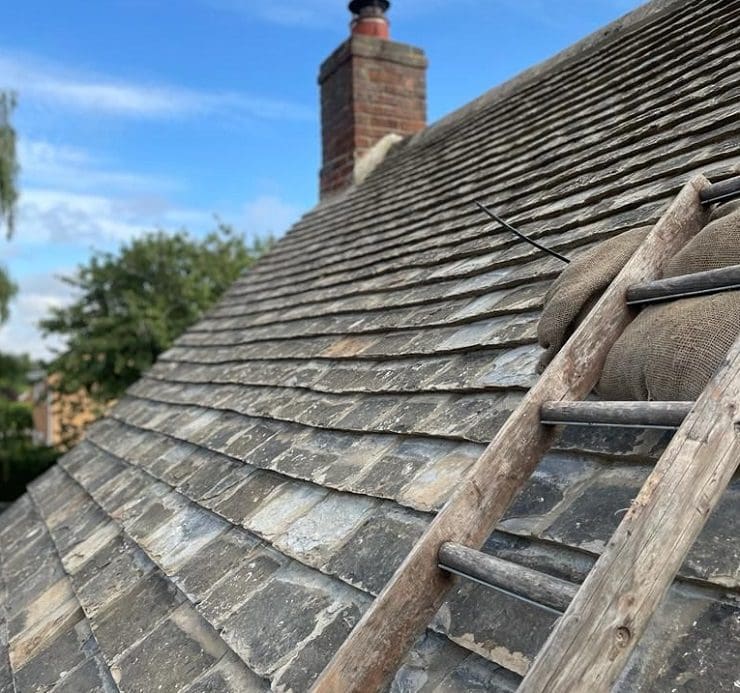Collyweston Slating Process
The process for Collyweston slating is labour-intensive and should performed by experts. This roofing method blends traditional craftsmanship with contemporary techniques. When it comes to replacing a Collyweston slate roof, extensive industry expertise and a sharp attention to detail are imperative.
At Heritage Roofing Services, we have more than three decades of experience in re-slating and are proud to be NFRC members. Over the past thirty years, we have been privileged to work on a diverse range of roofing projects. We understand that, given the rich historical tapestry of this picturesque region, it is crucial to preserve our heritage roofs and uphold traditional craftsmanship.
Below is a brief summary of what’s involved in a Collyweston Slating process.
PREPARING FOR RE-SLATING
The first thing that we do is strip off the Collyweston roof. We want to ensure we have the perfect base for your property. At this point, we can install additional roof insulation.
Taking section by section, we then lay a breathable felt membrane onto the exposed roof structure. Throughout this process, we ensure that the roof remains watertight.
HAND-DRESSING COLLYWESTON SLATE
We then traditionally hand dress each Collyweston slate by hand. Once our team has hand-dressed each tile, they drill a hole into each slate. They then arrange them into different size groups. Each tile is matched according to size and shape, ready for laying onto the roof structure.
ATTACHING COLLYWESTON SLATES TO THE ROOF
First, a traditional ‘spot bed lime mortar bed’ is laid before attaching each tile one by one. This creates a lip, allowing any heavy rainfall to run off the roof, protecting your home against dampness and leaks.
RE-CLAIMED COLLYWESTON SLATE
To complete the roof, we use additional re-claimed Collyweston slate. The re-claimed Collyweston stone replaces any perished slates lost in the removal process or that have reached the end of their natural life. Good quality additional Collyweston slate is key to ensure the roof is not ‘stretched.’ Stretched is where there are too few slates to complete the roof covering, and the overlap of the Collyweston slate would need to be more adequate to protect from rain.
Existing good-condition ridge tiles are re-used, and additional reclaimed Collyweston Hogs Back Clay ridge is added to complete the roof. Collyweston valleys are laid as turned lace valleys using traditional methods.
All lead work to the roof will be replaced, with new specifically coded lead for each area and three coats of patination oil applied to the new lead.

Collyweston Roofing Process
1. Strip the Roof
Take all the slates off, setting aside all re-useable Collyweston slates, and take the battens off.
2. Apply Felt
Place breathable quality felt, generally Permo Forte, on exposed structure and batton with new tanalised batten; completed in sections to keep it watertight.
3. Insulate the roof
Up to Building Regulations – choice of insulations available including Rock Wool and TLX Gold insulation which is also a breathable felt membrane.
4. Dress
Taking all the old mortar off each slate, by hand, and creating 3 straight sides
5. Drill
Create a hole to attach the slate to the battens.
6. Part
Putting slates into different size groups to match up when securing
7. Do a rod
Which measures the depth of the roof, and determines which size slates will be used.
8. Attach the slate
Using copper nails, in diminishing courses – Lay a spot bed traditional lime mortar bed, which allows the roof to breathe, over the natural slate shale between joints, then attach a slate, then rake it back to create a lip allowing water to drain properly